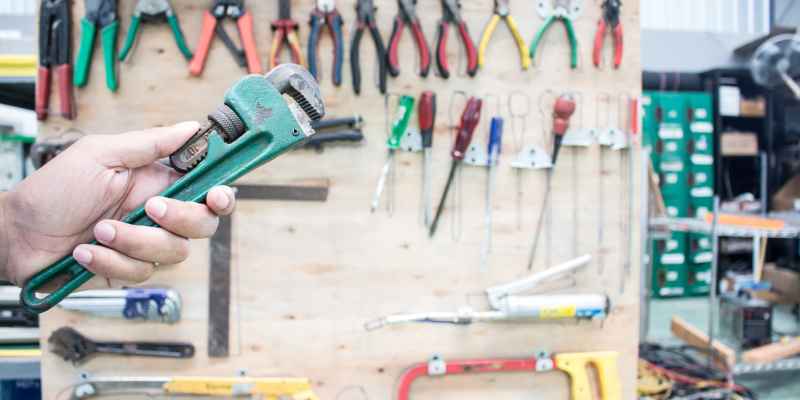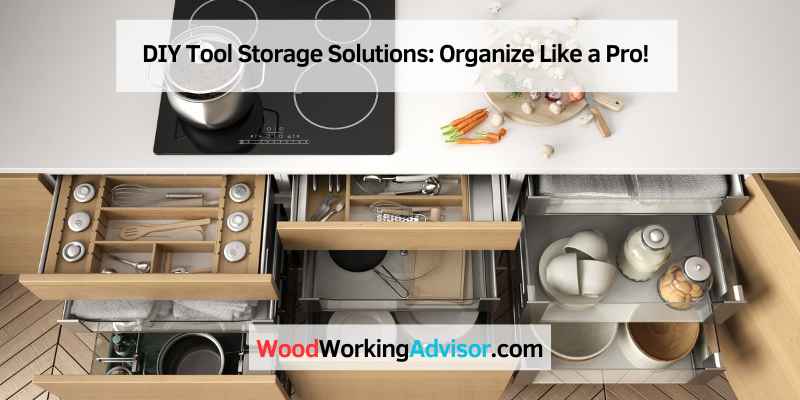Proper DIY tool storage keeps your workspace organized and tools easily accessible. It enhances efficiency and ensures safety.
Organizing tools is essential for any DIY enthusiast. A clutter-free workspace not only boosts productivity but also reduces the risk of accidents. Investing in proper tool storage solutions can save you time and frustration. Options include pegboards, tool chests, wall-mounted racks, and portable toolboxes.
Each offers unique benefits depending on your space and needs. Pegboards are great for visibility, while tool chests provide secure storage. Wall-mounted racks save floor space, and portable toolboxes offer mobility. Tailor your storage solution to fit your specific tools and workspace, ensuring everything has its place. An organized space enhances your DIY projects and keeps your tools in top condition.
Clever DIY Tool Storage Solutions
Pegboards can hold many tools. They save space and look neat. Hooks and shelves are easy to add. Hang pliers, hammers, and screwdrivers on them. Small bins can store nails and screws. Paint the pegboard for a fresh look.
Foam form organizers keep tools in place. Foam sheets are easy to cut. Trace your tools on the foam. Cut out the shapes with a knife. Place the foam in a drawer or toolbox. Tools fit perfectly and stay put.
Repurposing Household Items For Tool Storage
Old cabinets can store tools well. They keep tools organized and safe. Shelves can also help. They provide space for small items. Labels make finding tools easy. Use baskets for extra storage. Paint shelves to match your workspace.
Magnetic spice containers work great for small tools. Stick them to metal surfaces. Use them for nails, screws, and bolts. Clear lids help see what’s inside. They save space and keep things tidy. Easy to access and move around.
Wall Storage Systems To Maximize Space

Slatted wall panels hold tools and equipment. They keep your workspace tidy. Panels come in different sizes. You can choose what fits your space. They are easy to install. They help you find your tools fast.
Hanging bins and baskets store small items. They hang on the wall. You can see what is inside. They save floor space. Bins are good for screws and nails. Baskets hold larger tools.
Portable Tool Caddies For Flexibility
Buckets and totes can hold many tools. Use dividers for smaller items. Labels help find tools fast. Choose sturdy materials for durability. Handles make carrying easy.
Rolling toolboxes move easily. They have wheels and handles. Store heavy tools at the bottom. Keep light tools on top. Lockable drawers keep tools safe.
Creating A Tool Storage Workbench
Build shelves into the workbench frame. Use strong wood for the shelves. Measure the space for each shelf. Make sure they fit well. Place tools on the shelves. Keep the tools you use often on top shelves. Store heavy tools on the lower shelves. This helps keep the workbench stable. Label each shelf for easy finding.
Install drawers under the workbench. Use metal slides for smooth movement. Measure the drawer space carefully. Fit the drawers snugly in place. Keep small tools in these drawers. Use dividers to separate tools. This keeps them organized. Label each drawer for quick access. Keep safety gear in one drawer.
Vertical Storage Hacks

Cut PVC pipes into short pieces. Attach them to a board. Store tools like screwdrivers inside the pipes. This keeps tools organized. It also saves space. Easy to see each tool. No digging through a box.
Install racks on the ceiling. Use them to store long tools. Ladders, pipes, and boards fit well. This frees up floor space. Keeps the garage tidy. Easy to find what you need. No more tripping over items.
Mobile Storage Solutions For Larger Tools
Pallet racks are great for heavy tools. They can hold many items. Customize them for your needs. Add wheels for easy movement. Shelves can be adjusted. This helps fit different sizes of tools. Paint them for a clean look. Label each shelf for easy finding.
Tool chests on wheels save space. They are easy to move. Drawers help keep tools organized. Locking wheels keep it in place. These chests are sturdy. They can hold many heavy tools. Choose a chest with many drawers. This helps separate tools by type. Some chests come with power strips. This allows for easy charging of power tools.
Maintenance And Upkeep Of Your DIY Tool Storage
Clean your tools after each use. Wipe them with a dry cloth. Remove any dirt or grease. Store tools in a dry place. Moisture can cause rust. Use a brush to clean small parts. Keep your storage area clean. Sweep or vacuum the floor.
Always store sharp tools safely. Use covers or cases. Keep tools away from children’s reach. Store heavy tools on lower shelves. This prevents accidents. Label your tools. It helps you find them easily. Ensure your storage area is well-lit. Proper lighting helps you see clearly.
Frequently Asked Questions
How Do I Organize My DIY Tools?
Organize your DIY tools by categorizing them by type and size. Use pegboards, shelves, and labeled bins. Keeping everything in its place increases efficiency.
What Are The Best Tool Storage Ideas?
The best tool storage ideas include wall-mounted racks, pegboards, tool chests, and magnetic strips. These methods save space and keep tools accessible.
How Can I Make A DIY Tool Organizer?
To make a DIY tool organizer, use materials like wood, PVC pipes, or metal. Plan your layout, cut materials, and assemble. Customize it to fit your tools.
Why Is Tool Storage Important?
Tool storage is important to keep your workspace organized and safe. It prevents loss and damage of tools, saving you time and money.
Conclusion
Organizing your tools can be simple and rewarding. A well-planned DIY tool storage system saves time and space. By following these tips, you can create a functional and efficient workspace. Start your project today and enjoy a clutter-free environment. Happy organizing!


